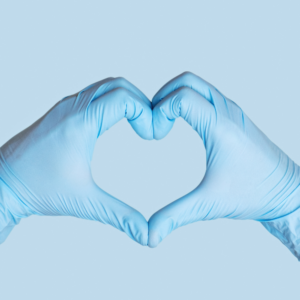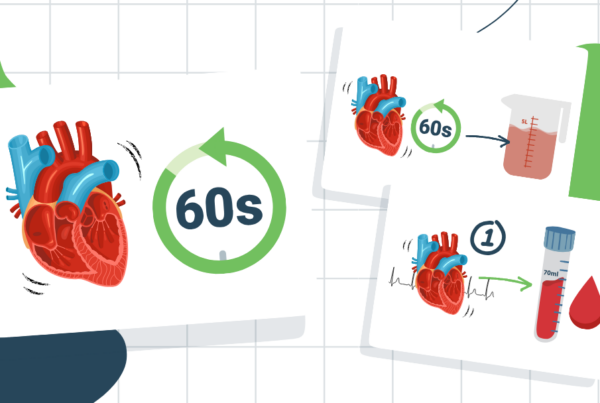 By Marc Minkler
By Marc Minkler
One of the greatest things about being an EMS provider is the need to use both your brain and your hands as your tools of the trade. You can’t just think about how to apply a splint; you must actually put your hands on the patient to apply a splint. In the same token, you can’t just know how to start an IV, but you must understand why and when. EMS providers must protect both of these tools, and we sometimes do this carelessly. Protecting our brain through rest, proper diet and watching for signs of PTSD are just a few methods and a story for another day. Protecting our hands is done through hand-washing and the use of medical gloves. Seems easy, yet medical providers continuously have low rates of compliance with these basic rules.
When cleaning hands, the CDC recommends the use of alcohol-based sanitizers, unless visibly dirty. Examine your hands for visible contaminants – if so, use soap and water to flush and clean your hands. Regardless of method, when washing your hands, pay attention to the finger tips, in between fingers, and your thumb, as they are the most frequently missed areas. Cleaning should last a minimum of 15-20 seconds.
“Scene Safety, BSI”
We learn about gloves early in our EMS career, reciting the NREMT mantra of “Scene safe, BSI,” and I have seen students test at practical exams wearing gloves the whole day, so they “don’t forget.” While this might seem practical, it is a bad habit. Additionally, if you are learning or practicing an EMS skill, wear gloves. If you were providing bleeding control for a patient, you would be wearing gloves, so use good habits and wear them when you practice. Marcus Luttrell, a former Navy SEAL, earning a Navy Cross and Purple Heart, sums this up perfectly, saying “You play like you practice, and you practice like you play.”
One of the frequently asked questions by new providers is “When should I put on my gloves?” The simple answer? “When you need them.” A good provider wants to be prepared, but remember what the use of gloves is for – helping to protect you from the patient AND the patient from you. Where have your hands been today? Do you have a sniffle? Pets at home? Just finished checking the oil in the ambulance? Imagine doing EMS care for a patient with a compromised immune system after cleaning the station bathrooms.
History of Medical Gloves
Medical gloves were first invented in 1890, through a collaboration between Dr. William Halstead at Johns Hopkins Hospital in Baltimore and Goodyear Rubber Company. An OR nurse, Caroline Hampton, was developing rashes from the chemicals used in surgeries and her use of the new gloves caught on quickly with other staff having similar reactions. Frighteningly, the first disposable medical glove was not invented for another 75 years, in 1965, and it was not until 1992 that OSHA began requiring the use of medical gloves to protect medical staff.
Gloves, regardless of material, are made by a machine process (see YouTube video to watch the process) and are designed to be thrown away. Let that sink in. One of your primary defenses is something meant for you to throw away.
Journey of a Glove
So, envision you preplan the call you are responding to, and sitting in the passenger seat in the ambulance, you decide to put your gloves on. Let’s follow a common path these gloves might take:
1. Pick up radio mic and indicate that your unit is on scene. Return mic to clip.
2. Open the door to exit ambulance.
3. Close the door to the ambulance.
4. Open the compartment to grab jumpkit.
5. Close the compartment door.
6. Carry the jumpkit (and likely lots of other stuff).
7. Open the door to the residence.
8. Set the jumpkit down.
9. Use portable radio to report you are now with the patient.
10. Touch the patient, take vital signs, perform EMS skills.
When we think about these ten steps, how many contaminants could have been picked up by your gloves? How many times have you opened the door of your ambulance? How often does your jumpkit get washed and decontaminated? What are the chances of holes and tears developing in the gloves? These steps don’t even include lifting, moving and transporting the patient.
Your response may be to put gloves in your pocket and put them on when you reach the patient’s side. Just remember what may be in your pocket. If you are anything like me, you may have keys, a pocketknife, and a cell phone in your pocket, all potential sources of damage to gloves. Keep a pocket clean, and empty for gloves, use a glove holder on your belt, or have easily accessible and labeled pairs in your jumpkit. A prepared provider will carry three pairs – yours, a spare set, and a pair for your partner who always seems to forget.
Taking a moment to put on gloves at your patient’s side allows you a moment to take a breath and begin your visual assessment. It is also akin to your doctor washing their hands before treating you. One of my daughter’s classroom rules is “Hands are for helping, not hurting.” It’s a good rule for all of us.
Marc Minkler is a 30-year paramedic, educator, and student. In his path in EMS, he has worked as an EMS Chief, Training Officer, and multiple other roles. He is the owner of mainelyems.com and seeks out finely crafted beer.
References
Hand hygiene in healthcare settings (2016, April 28). Retrieved January 2, 2018, from
https://www.cdc.gov/handhygiene/science/index.html
How it’s made – rubber gloves. (2015, January 21). Retrieved January 2, 2018, from
https://www.youtube.com/watch?v=A9PMs_N33fU
The history of disposable gloves. (n.d.). Retrieved January 2, 2018, from
https://blog.ammex.com/medical-market-gloves/the-history-of-disposable-gloves


